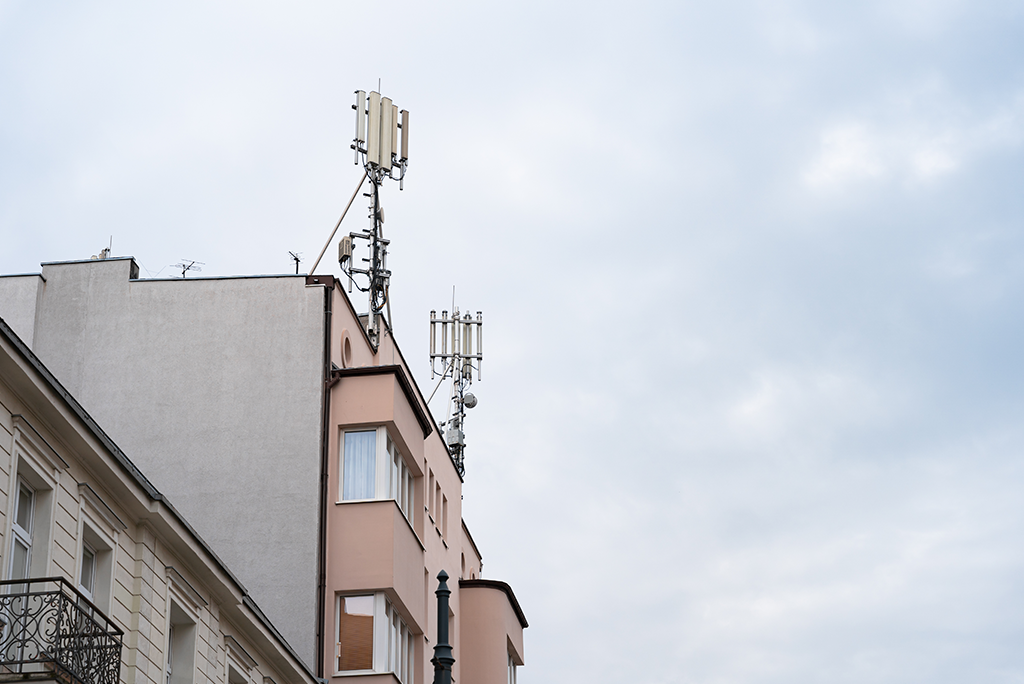
A recent study from Joint Venture Silicon Valley debunked the long held myth by the real estate industry that 5G cell sites decrease property values. In fact, it found that 5G cell sites actually increase home valuations in some cases, particularly in urban areas, due to its popularity with younger home buyers.
In the past, real estate valuation studies largely focused on the impact of larger wireless towers (“marco sites”), rather than smaller 5G cells sites. Typically, these smaller sites are strapped to wooden poles and street lights throughout cities and residential neighborhoods.
“None of the previous objective studies found economically-significant impacts—positive or negative—to property valuations, but nevertheless there is an extant belief (or an “urban legend”) held by some real estate agents that wireless sites near residences can cause property valuation reductions of up to 20%,” the study’s authors write.
They add that while “objective peer-reviewed studies” show no evidence of residential real estate devaluation caused by wireless sites, “a belief that wireless sites cause devaluation persists and is often raised as an objection during planning commission, city council, county board, and permit appeal hearings.”
Study Methods
The study, “Economic Impacts to Residential Real Estate from Small Wireless Facilities,” published in July 2021, sought to answer the question of whether wireless small cell sites have had any positive or negative effect on the valuation of residential real estate. The authors also looked to demonstrate whether there was any truth to the 20% reduction in property valuation claim.
The study is based on:
- 1,734 small cell sites installed in the U.S. state of California between 2010 to 2020.
- 11,684,458 real estate transactions across the state over that decade.
- Residential real estate valuations for properties within 10 kilometers of small cell sites, compared to valuations for similar properties not near them, both before and after the construction of the sites.
- Spatial difference-in-differences analysis, a method examining any existing effects on real estate sales prices from wireless small cell sites, which “show up as variations in sale price trajectories” between the homes near wireless sites and those not near them, “with variation occurring during or after the time point when the small cell sites were built.”
Statewide Versus Metropolitan Analysis
Both statewide and metropolitan analysis found no evidence to support the claim that wireless sites lead to 20% reductions in valuation. In some cases, real estate valuations changed after the construction of wireless sites, though the results were mixed and often minor.
Metropolitan: Out of the sixteen metropolitan regions analyzed, six showed “no statistical significance” in home valuations, meaning nearby wireless sites had no influence on home valuations. Six metro areas saw “economically significant valuation increases” (price variations above 1%), including San Francisco (+3.73%), Oakland (+3.25%), Fresno (+3.94%), Santa Barbara (+2.56%), and Modesto (+16.22%). Three metro areas had “statistically significant valuation decreases.” However, none were “economically significant.”
Statewide: Across the state as a whole, nearby wireless sites led to “statistically significant increases” in residential real estate valuation at “all distances” after they were built, though not all were “economically significant.” Valuations went up +0.03% “within 0.1 kilometers of a wireless site” to +2.14% “at distances from 8.4 km to 8.9 kilometers.”
Conclusions
The study found “zero statistical evidence” that small wireless cell sites negatively impact residential real estate valuations, with “some evidence” that homes within 10 km of a new small wireless facility actually increased in value. In cases where there were negative economic impacts, they were not significant.
Bridging the 4G/5G Gap
Get ready for the next generation of wireless network technology. The IEEE two-course program, Bridging the 4G/5G Gap: Telecommunications Roadmap for Implementation, provides a historical overview of 4G/5G technology, identifies what is needed for 5G integration in a 3G/4G world, and showcases the scientific evidence surrounding wireless facilities’ impact on property value and human health, and more.
Contact an IEEE Content Specialist today to learn more about getting access to these courses for your organization.
Interested in the course for yourself? Visit the IEEE Learning Network.
Resources
(July 2021). Economic Impacts to Residential Real Estate from Small Wireless Facilities. Joint Venture Silicon Valley.


No comments yet.